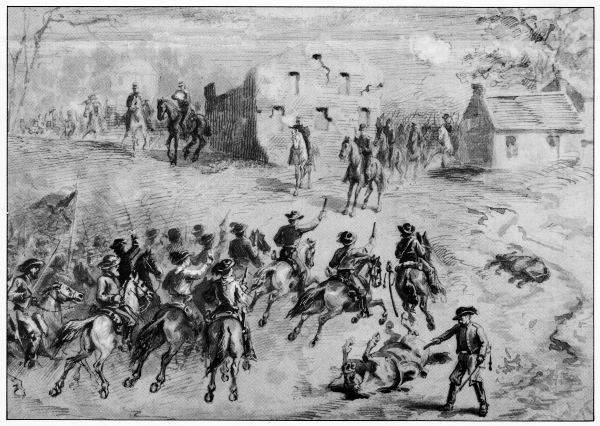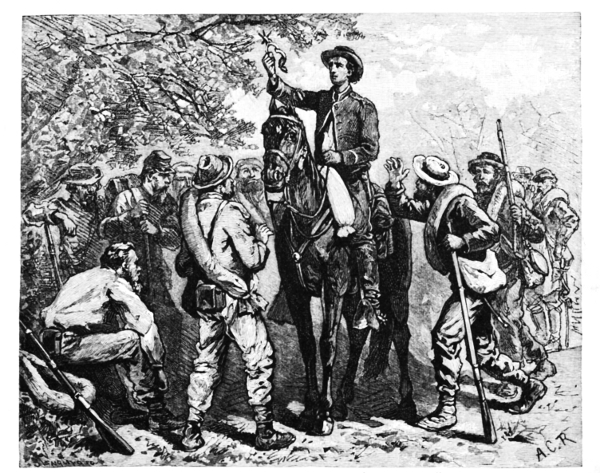Allen Christian Redwood and the 55th Virginia Regiment
1864: In the Cavalry
Upon joining his new command, the young cavalier's first task was to visit his relatives at Warrenton, N.C. to obtain his horse. This he did with the help of a ten-day furlough issued on February 1st.1 Not long after his return, the excitement began and for the next three months the 1st Maryland was employed harassing the flank and rear of large Federal raiding parties heading for Richmond.2 It was dangerous and difficult work; Redwood had his horse shot from under him at Pollards Farm on May 27th.3 The untitled Image 1 is a depiction of a Confederate cavalry charge, the figure in the foreground in the act of destroying his wounded mount may have been of personal significance to the artist – detail given in Image 2.
The battalion then transferred to the Shenandoah Valley and joined in Lieutenant General Early's sortie against Washington. Thereafter Redwood participated in all the contests of the 1864 Valley Campaign. The Confederates were badly over-matched and he recalled, “It was sordid, dead-in-earnest, sure-enough war now, with all the gloss worn off.”4 In mid-September he was detailed to Major General Lunsford Lomax's escort (Lomax commanded Early's cavalry) and from October 4th he served as clerk to, and a courier for, Captain W. K. Martin, Lomax's adjutant.5 To delineate his attachment to the staff, the young rider took to wearing “a pair of Mexican spurs, with rowles measuring several inches in diameter.” He naively assumed these made him look pretty fine, but merciless wags in the infantry soon taught him otherwise – Image 3:
Notes
1 Redwood's Compiled Service Record, U.S. National Archives, M-321, roll 5.
2 There is a concise history of the operations of the 1st Maryland Cavalry Battalion at
http://www.2ndmdinfantryus.org/cscav1.html
3 Confederate Veteran, Vol. XXXI 1923, page 67:
https://archive.org/stream/confederateveter31conf#page/66/mode/2up
4 Journal of the Military Service Institution, Vol. XLIX, 1911, page 119.
5 Civil War Times Illustrated, Vol. 23, Issue 6, page 33.


